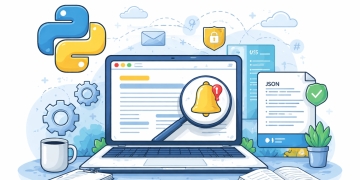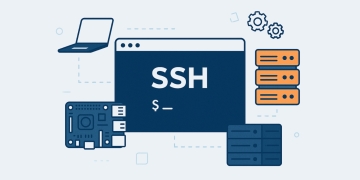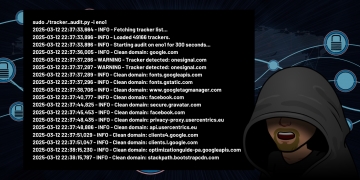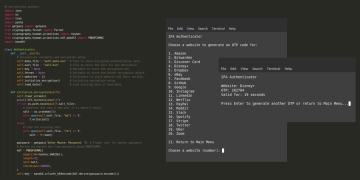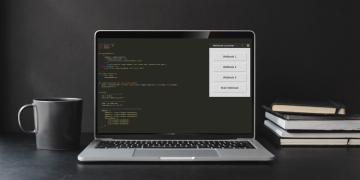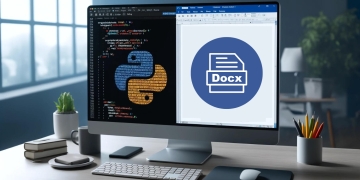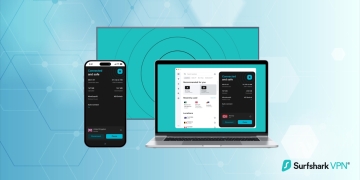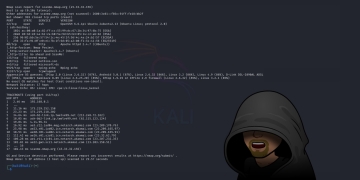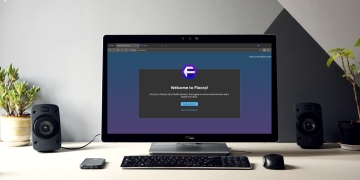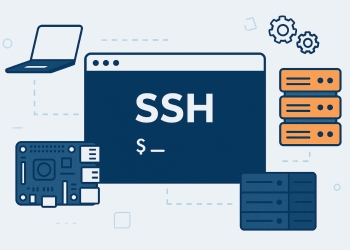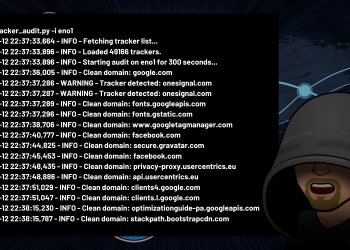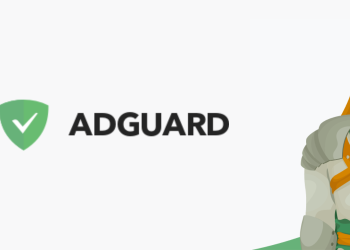The perpetual arms race between threat actors and defenders often hinges on the tools each employs. For Linux users, one potent weapon in the malware detection and prevention arsenal is ClamAV. This open-source antivirus engine is designed to detect Trojans, viruses, malware, and other malicious threats. This article demystifies ClamAV, providing a step-by-step guide to installation, configuration, and usage on Linux systems.
Installation
Installing ClamAV on a Linux system is a straightforward process that can be accomplished using the terminal. This section will guide you through the necessary steps to install ClamAV using your distribution’s package manager and from the source code. It will also cover the basic configuration needed to get ClamAV up and running.
Prerequisites
Before proceeding with the installation, ensure you have:
- A terminal window or command-line access
- Sudo privileges or root access to install packages
Package Installation
Most Linux distributions include ClamAV in their default repositories. Here is how you can install it using various package managers:
For Debian/Ubuntu-based systems
sudo apt-get update sudo apt-get install clamav clamav-daemon
For Red Hat/Fedora systems
sudo dnf install clamav-server clamav-data clamav-update clamav-filesystem clamav clamav-scanner-systemd clamav-devel clamav-lib clamav-server-systemd
For SUSE-based systems
sudo zypper install clamav
After the installation, the ClamAV service will need to be started and enabled to run at boot:
sudo systemctl start clamav-daemon sudo systemctl enable clamav-daemon
Verifying the Installation
To verify that ClamAV has been installed successfully and is running, use:
clamscan --version
This command should return the version of ClamAV that is currently installed on your system.
Post-Installation Configuration
After installing ClamAV, a few configuration steps are required to set up the virus database and ensure ClamAV runs correctly.
Update the virus database with freshclam:
sudo freshclam
If freshclam is not installed, you might need to install it separately or run it from the ClamAV source directory:
sudo clamav-freshclam
Configuration
Once ClamAV is installed on your Linux system, proper configuration is essential to ensure optimal performance and effective protection against malware. The configuration process involves setting up the virus database updater freshclam and the antivirus daemon clamd.
Freshclam Configuration
freshclam is the virus database update tool for ClamAV. It’s important to keep the virus database current to detect the latest threats.
Understanding freshclam.conf
The configuration file for freshclam is usually located at /etc/clamav/freshclam.conf. Before editing this file, it is advisable to back it up:
sudo cp /etc/clamav/freshclam.conf /etc/clamav/freshclam.conf.backup
Open the freshclam.conf file with your preferred text editor:
sudo nano /etc/clamav/freshclam.conf
Here are some key parameters to configure:
- DatabaseMirror: Defines the mirror server from which freshclam will download the updates. By default, ClamAV selects the closest and most reliable mirror. It is advisable to have at least two mirror directives in the configuration file.
- Checks: Determines how many times per day freshclam checks for updates. The default is 24; however, setting this to 12 will check every two hours, which is recommended for high-traffic systems.
- NotifyClamd: Informs the ClamAV daemon to reload the database after a successful update. Ensure this points to your clamd.conf file.
- Remove the Example line: If the configuration file contains an Example line, it must be commented out or removed to activate freshclam.
After configuring freshclam.conf, save the file and exit the editor.
Scheduling Automatic Database Updates
To keep the virus database up-to-date, you can schedule freshclam to run at regular intervals using a cron job.
Open the crontab for editing:
sudo crontab -e
Add a line to schedule freshclam:
0 */2 * * * /usr/bin/freshclam --quiet
This cron job will run freshclam every two hours. Adjust the schedule according to your needs.
Clamd Configuration
clamd is the scanning daemon that performs the actual scanning process. Configuring clamd is as important as updating the virus database.
Editing clamd.conf
The clamd.conf file, is typically located at /etc/clamav/clamd.conf, contains settings for the ClamAV daemon. As with freshclam.conf, back up this file before making changes:
sudo cp /etc/clamav/clamd.conf /etc/clamav/clamd.conf.backup
Open clamd.conf with a text editor:
sudo nano /etc/clamav/clamd.conf
Key parameters to review and configure:
- LogFile: Defines the path to the log file where clamd records scanning activities. Ensure logging is enabled and specify the log file path.
- LogTime: If set to yes, clamd will add a timestamp to each log entry, which is useful for tracking and historical analysis.
- MaxDirectoryRecursion: Sets the limit for directory recursion depth during scanning. Adjust according to your security requirements and system performance.
- ReadTimeout: The time clamd waits for a read operation to complete. If your system is on a heavy load, increasing this timeout may be beneficial.
- User: Specifies the user under which clamd will run. It is recommended to run clamd as a non-root user for security reasons.
- ExcludePath: This allows you to exclude specific paths from scanning.
- Remove or comment out the Example line: As with freshclam.conf, ensure that the Example line is not active if it exists.
After making changes, save the file and exit the editor.
Optimizing Performance Settings
Performance settings within clamd.conf can be adjusted to balance between scanning thoroughness and system resource usage.
- MaxThreads: Determines the maximum number of threads clamd can create. Increasing this number can improve scanning speed but will also consume more system resources.
- MaxScanSize, MaxFileSize, and MaxRecursion: These parameters define the maximum scan size, file size, and recursion level that clamd will handle. Increasing these limits allows clamd to scan larger files and deeper directory structures but requires more memory.
After configuring clamd.conf, restart the ClamAV daemon to apply the changes:
sudo systemctl restart clamav-daemon
Verifying Configuration
To ensure that your changes have been applied successfully, you can check the status of the ClamAV daemon:
sudo systemctl status clamav-daemon
The status should indicate that the daemon is active and running with the new configuration.
Usage
With ClamAV installed and configured, it’s time to begin using the software to scan for and mitigate threats. This section will cover the basics of manual scanning, automating scans, and interpreting the results.
Running a Manual Scan
ClamAV is flexible, allowing users to scan individual files, directories, or entire systems. To begin scanning, open the terminal and use the clamscan command.
Command-Line Syntax
The basic syntax for a ClamAV scan is:
clamscan [options] [file/directory/...]
Here are some common options you might use:
- -r: Recursively scan directories.
- –infected: Only show infected files.
- –remove: Remove infected files (use with caution).
- -o: Only show infected files and ring a bell when found.
For example, to scan the entire system, display only the infected files, and remove them, you would use:
sudo clamscan -r --infected --remove /
Note: Removing files automatically can be risky; it’s advisable to review the infected files before deletion.
Scanning Different File Types
ClamAV can scan various file types, including archives. By default, ClamAV is configured to scan within archives, but this can be disabled if needed to save time during scans.
For example, to scan all .html and .php files in the /var/www directory, you would use:
sudo clamscan -r --infected --include='\.(html|php)$' /var/www
Automating Scans
For convenience and regular security checks, ClamAV scans can be automated using cron jobs.
Cron Jobs for Regular Scans
Open your crontab:
sudo crontab -e
Add an entry to schedule a daily scan at a specific time (for example, 2 AM):
0 2 * * * clamscan -r --infected /home/user >> /var/log/clamav/daily_scan.log
This cron job will scan the /home/user directory every day at 2 AM and append the output to a log file.
Scripting Scan Tasks
For more complex scanning tasks, you can write a shell script. Here’s a simple example:
#!/bin/bash LOGFILE="/var/log/clamav/scan_$(date +%Y%m%d).log" DIRTOSCAN="/home/user" echo "Starting a daily scan of "$DIRTOSCAN" directory." echo "Any infections will be moved to /quarantine." clamscan -r --infected --move=/quarantine $DIRTOSCAN >> $LOGFILE echo "The scan is finished."
Make the script executable:
chmod +x /path/to/your/script.sh
And schedule it in crontab as shown before.
Interpreting Scan Results
After running a scan, ClamAV will display the results directly in the terminal or within a specified log file. The output will include information on the number of files scanned, infected files, and any actions taken.
Infected files will be listed with the name of the malware detected. It is important to review these results carefully to determine the next steps, such as further investigation, removal, or restoration from backups.
Handling False Positives
Occasionally, ClamAV may identify a file as infected when it’s not (a false positive). If you suspect a false positive, you can submit the file to the ClamAV team for analysis or check it against other antivirus solutions.
ClamAV is not just a simple command-line scanner; it offers several advanced features that provide enhanced security measures, including real-time scanning and email scanning capabilities. These features can significantly improve your system’s defense against malware.
Advanced Features
ClamAV is not just a simple command-line scanner; it offers several advanced features that provide enhanced security measures, including real-time scanning and email scanning capabilities. These features can significantly improve your system’s defense against malware.
Real-Time Scanning
Real-time scanning, or on-access scanning, monitors files as they are accessed and blocks threats before they can cause damage. ClamAV implements this through the clamonacc service, which uses fanotify, a file access notification system built into the Linux kernel.
Configuring ClamAV Daemon
To enable real-time scanning, you must ensure the ClamAV daemon is set up to start automatically and is configured correctly. You’ve already learned how to start and enable the daemon in the installation section.
Setting Up File Watchers
To set up real-time scanning:
Ensure your kernel supports fanotify by checking your kernel version (it should be 2.6.37 or newer):
uname -r
Start the clamonacc service:
sudo clamonacc --log=/var/log/clamonacc.log --move=/quarantine
This command will start monitoring access to all files, logging events to /var/log/clamonacc.log, and moving detected threats to /quarantine.
For persistent real-time monitoring, you can create a systemd service file for clamonacc.
Troubleshooting
Even with careful configuration, users may encounter issues with ClamAV. This section provides guidance on resolving common problems and where to find additional help.
Common Issues
Update Failures: Occasionally, freshclam may fail to update the virus database. This can be due to network issues, server problems, or misconfigurations in freshclam.conf.
Ensure that the database mirror is reachable and that your network connection is stable. Verify that the DatabaseMirror directive in freshclam.conf is correct.
Check for any error messages by running freshclam in the verbose mode:
sudo freshclam -v
Scanning Errors: Errors during scanning can be caused by insufficient permissions, corrupted files, or misconfigurations.
Confirm that clamscan has read access to the files and directories you are scanning.
Check the logs for any specific error messages:
cat /var/log/clamav/clamav.log
If running clamscan as a cron job, ensure the cron user has the correct permissions.
Logs and Reports
ClamAV keeps detailed logs that can be invaluable for troubleshooting. By default, the logs are located in /var/log/clamav/.
Reading ClamAV Logs:
Open the log file with a text editor or a command-line tool like less:
less /var/log/clamav/clamav.log
Look for entries marked as ERROR or WARNING to identify potential issues.
Interpreting Scan Reports:
Scan reports will list the files scanned and any infections found. They will also show any actions taken, such as files quarantined or deleted. To better understand the nature of a detected threat, use online malware databases or the ClamAV website to look up the signature of the detected malware.
Updating ClamAV
Software updates can fix bugs and improve performance. Ensure you have the latest version of ClamAV by checking the version against the one listed on the official ClamAV website.
Checking Your Current Version
First, check your currently installed version of ClamAV:
clamscan --version
Updating ClamAV Software
If you installed ClamAV from your distribution repository, you would use your package manager to update it.
For Debian/Ubuntu-based systems:
sudo apt-get update sudo apt-get install clamav clamav-daemon
For Red Hat/Fedora systems:
sudo dnf update clamav-server clamav-data clamav-update clamav-filesystem clamav clamav-scanner-systemd clamav-devel clamav-lib clamav-server-systemd
For SUSE-based systems:
sudo zypper update clamav
Conclusion
ClamAV stands as a testament to the power and versatility of open-source software within cybersecurity. This robust antivirus engine offers Linux users a reliable line of defense against a multitude of digital threats through its various scanning capabilities, real-time protection, and advanced features.
Throughout this guide, we have explored the intricacies of ClamAV—from installation and configuration to usage and beyond. I have detailed how to install ClamAV on various Linux distributions, how to keep it updated with freshclam, and how to configure it for optimal performance. We’ve also dived into the usage of ClamAV for manual and automated scans, interpreting scan results, and taking appropriate actions against detected threats.
Furthermore, we have uncovered the advanced features that set ClamAV apart, such as real-time scanning with clamonacc. When issues arise, as they inevitably do with any software, we have outlined a structured approach to troubleshooting to swiftly restore functionality and security.
In conclusion, ClamAV embodies a comprehensive, scalable solution for Linux users seeking to safeguard their systems. Whether you are an individual looking to protect a personal computer or a system administrator securing an enterprise network, ClamAV provides the tools necessary to prevent, detect, and respond to malware.
With vigilant configuration and regular maintenance, ClamAV can serve as a formidable barrier against the ever-evolving malware. The community-driven support and continuous development ensure that ClamAV remains relevant and effective in combating contemporary security threats.
By embracing ClamAV and the principles outlined in this guide, users can significantly enhance the security posture of their Linux systems, ensuring peace of mind in an increasingly connected world.
For more information on ClamAV, you can visit the official website.

